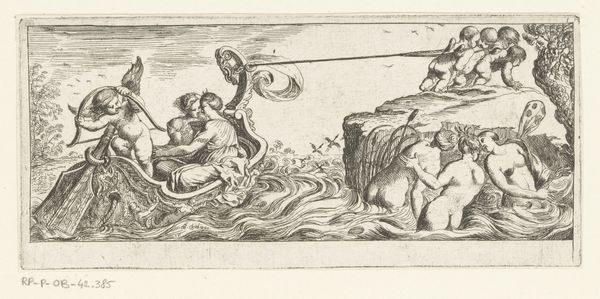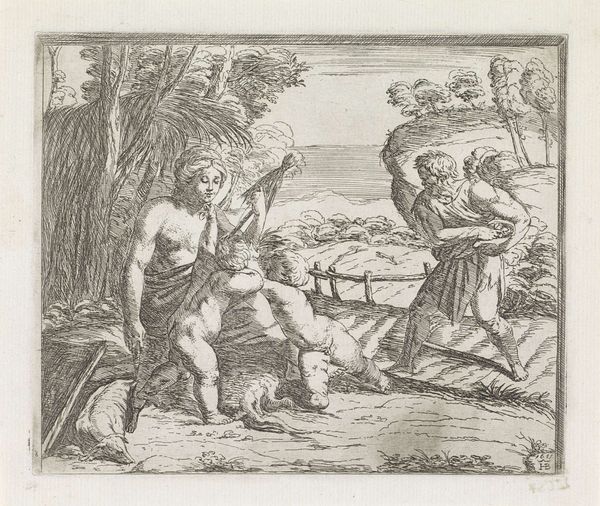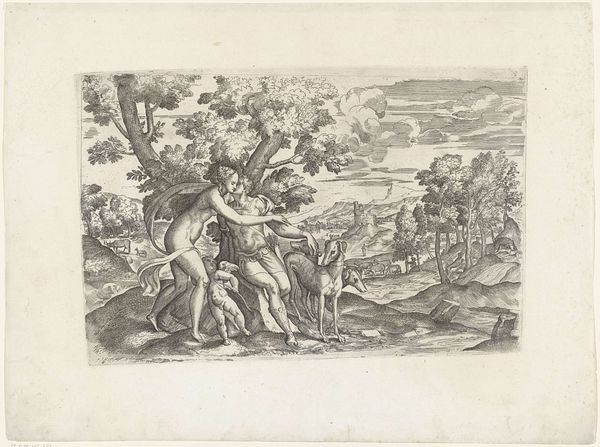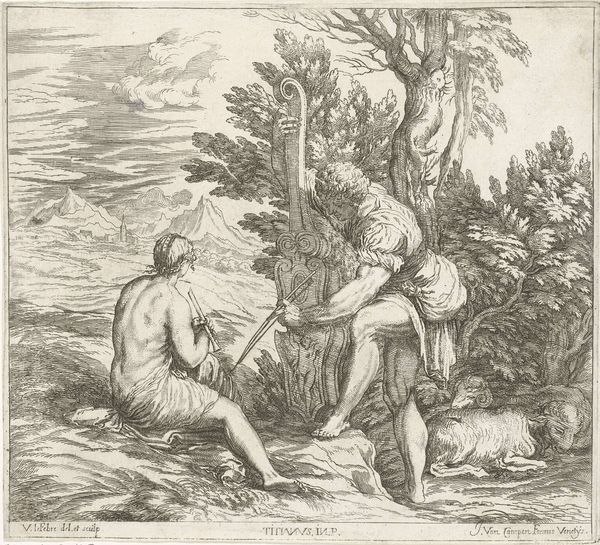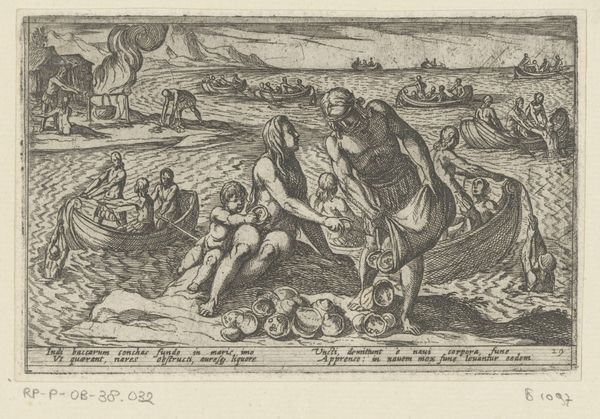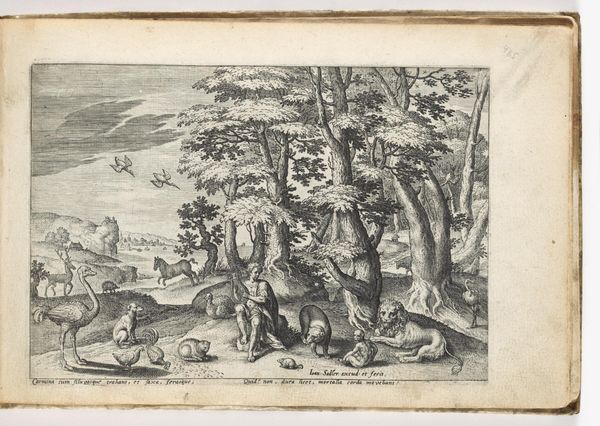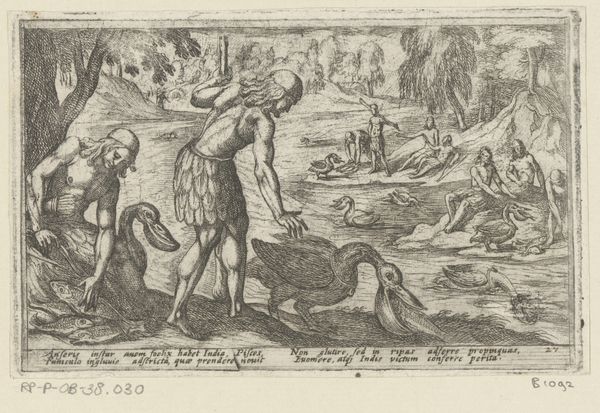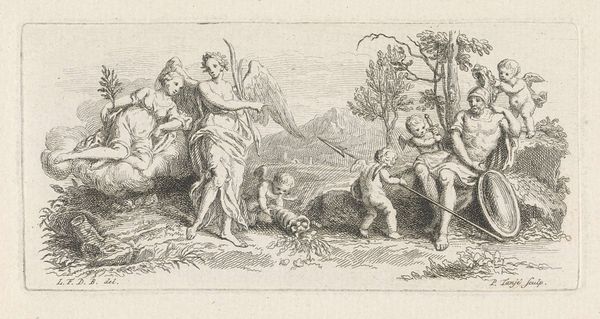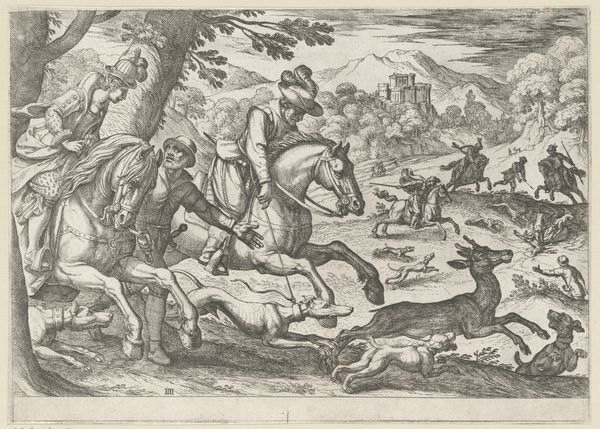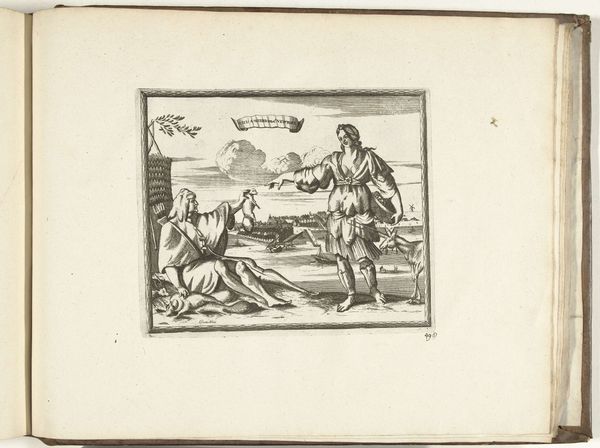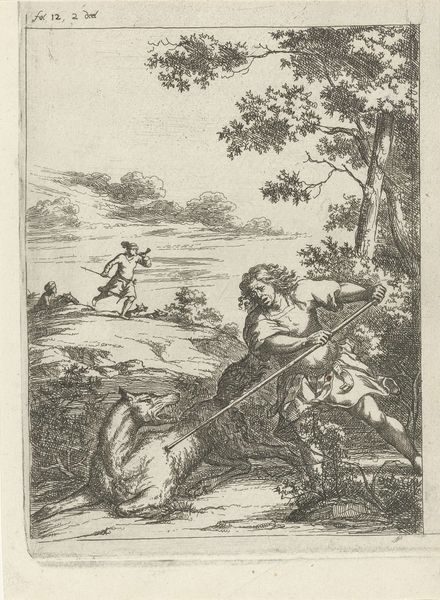
print, engraving
#
medieval
#
narrative-art
# print
#
landscape
#
figuration
#
intimism
#
classicism
#
orientalism
#
line
#
genre-painting
#
history-painting
#
academic-art
#
engraving
Dimensions: height 143 mm, width 184 mm
Copyright: Rijks Museum: Open Domain
Curator: Welcome. We're standing before "Vrouw met kinderen van Tierra del Fuego, 1599", an engraving that dates from 1617 to 1619, created by an anonymous artist. It's currently held here at the Rijksmuseum. Editor: Wow, what strikes me is how the landscape feels almost theatrical. The stark, almost barren beach juxtaposed with the mountains gives it this very strange, otherworldly atmosphere. And the woman... there’s a maternal fierceness there, but it's tinged with this almost painful exposure. Curator: That tension is key. The print is rooted in the colonial narratives of the time. These images often served to construct ideas about the ‘new world’ and its inhabitants, sometimes romanticizing, sometimes demonizing, but almost always filtered through a very specific European lens. We can note here how classical the woman's features and stance are rendered. Editor: Right! There's something undeniably constructed about it all. The scene almost feels… staged. You have the almost classically posed woman, the kids. The landscape is so stylized it doesn’t really feel…real. Does it reflect the European fascination with exoticizing unknown cultures? Curator: Absolutely. The image attempts to depict a woman and children from Tierra del Fuego. As an engraving, it could be mass-produced and widely circulated, contributing to the construction of popular understandings—or rather, misunderstandings—about indigenous populations. Editor: I’m curious about the little boat in the background too; it's so miniscule yet so present! I can’t help but imagine the original context in which this representation was made—it must have felt truly transformative to many in Europe at the time, both a scientific observation and perhaps even a spiritual encounter! Curator: Indeed. It offered a window, however distorted, into a world entirely unknown to most Europeans, solidifying beliefs, prejudices, and ultimately playing a role in the justification of colonial projects. Editor: This has really sparked a reflection of how we create an encounter with the rest of the world through art. What appears a faithful reproduction also acts a creation of realities, often rooted in the creators' world. Curator: It’s a reminder that even seemingly objective images are embedded with subjective perspectives and power dynamics that shape how we perceive history and other cultures.
Comments
No comments
Be the first to comment and join the conversation on the ultimate creative platform.

